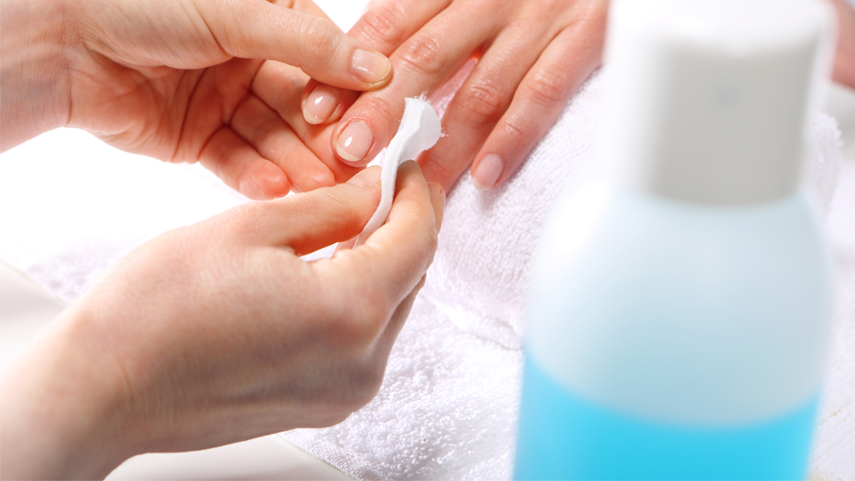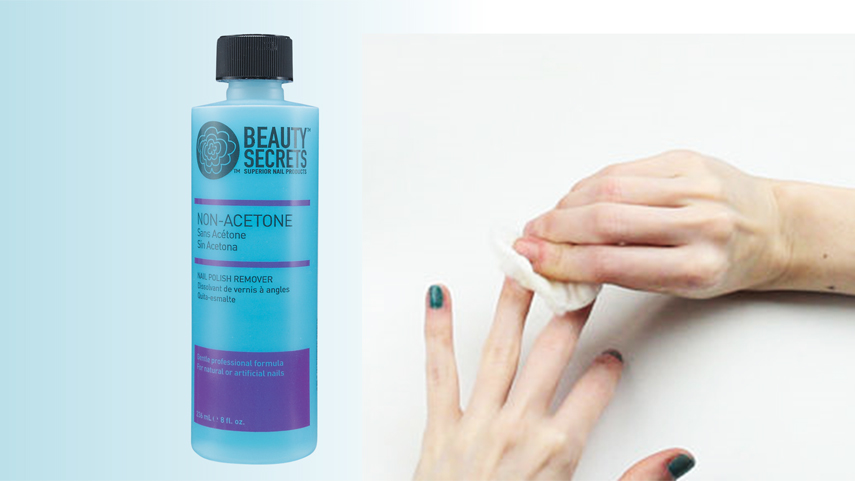Applying the nail polish it can be a fun activity. The problem comes with removing them. Removing old and unwanted nail polish can be difficult. It can get really messy and stinky at times. Some people may even prefer to leave the work for the professionals. Whether you choose to do it yourself or leave it for the pros depends on you. Whichever choice you make is up to you. However, you need to understand what nail polish remover is and how it works. A close study of the nail polish remover will certainly give you an insight into how they work.

A nail polish remover is a solvent. It is used to dissolve nail polish. Some of these solvents are so powerful they can disintegrate even plastic. For those on fake nail extensions, acetone-based nail polish remover is not advisable. They can disintegrate the artificial nails. Acetone is clear colored with a very toxic smell, it is highly flammable. This is because it is made from isopropyl alcohol.
For those of you using fake nail extensions, all hope is not lost. There is non-acetone-based nail polish remover manufactured just for you. The main active ingredient used in this kind of nail polish remover is ethyl acetate. This is made from alcohol and acetic acid. This ingredient is almost like the acetone but not as strong. It is colorless and highly flammable but will not cause your nail extensions to split. It has a sweet fragrant smell which explains why they are also added to perfumes.
Most nail polish removers contain a solvent as part of their ingredients. Remember your chemistry class day’s lecture on the polymer. It is easier to understand this way: see your nail polish remover as a solvent. On the other hand, your nail polish is a toughened organic polymer. When the remover and the polish come in contact, the molecules of the solvent will force its way through the molecules polymer, causing them to collapse.
Acetone-based nail polish remover is good for removing glitter nails because of their strength. The chemical composition of the glitter nail makes it tough and difficult to break down. Also, it is suitable for dark colored nail polish. However, it should not be used on fake nail extensions. It can cause the extension to become weak and separate from the natural nails.
How does Nail Polish Remover Work?
There are two major types of nail polish removers like we stated earlier. We have the acetone and non-acetone based nail polish removers. There are a lot of popular brands who manufacture both types. It is usually clearly written on the label. Both types of nail polish have a solvent. This solvent helps to break down the hard film created by the nail polish. The ingredients used in manufacturing nail polish include resins, plasticizers, hue pigments & film formers. They are designed to give a nice even coat of nail polish. They are also designed to dry up quickly. The application process can be very easy but the removal process is a different case altogether. They do not come off so easily. This is where the nail polish remover comes in.

Why you should avoid the Acetone Nail Polish Remover
The acetone nail polish is very effective and works best for removing nail polish. However, they are also very harsh and can be harmful in a long run. They can cause you to lose a lot of natural oil from your skin. When used for a long period of time, it can cause discolored nails. Most times, nail breakage and chipping are caused by too much use of acetone. It is also easy to notice people with white skin around the nail. This is as a result of dried up skin oil after the use of acetone. Acetone is the most effective way of removing nail polish, but still, it should be avoided. It is very harsh on the nails, cuticles, and skin. If you notice you have dry nails, it is better to avoid acetone.
There is another remedy for you. Try investing in nail polish remover without acetone. This may not be as effective as acetone but the same results are guaranteed.
Nail Polish Remover without Acetone
This kind of nail polish remover uses less hostile solvents. Solvents like isopropyl alcohol and propylene carbonate are less harmful to the nail beds. Even organic nail polish removers still rely on solvent even though not acetone. They augment it with moisturizers such as panthenol, glycerin, and some natural oils. These additives help to reduce the drying effect of the nail polish remover. They may not be as easy to use and as effective as the acetone but the application of some pressure will get the job done. Repeat as many times as needed until the old nail polish is completely dissolved. Wash off hands with cold water and don’t forget to apply some body lotion. You can also apply natural oils to keep the fingers nails moisturized.
Advantages of Nail Polish Remover without Acetone
They are less aggressive than acetone. The solvents are less drying than the acetone (some can still be drying but not like the acetone).
Disadvantages of Non-Acetone Based Nail Polish Remover
They don’t work as effectively as the acetone. Requires more pressure to get rid of old nail polish. Even more difficult to remove dark colors and sparkle nails. It will likely not work on shellac (no-chip) nail manicure.
Nail polish remover without acetone is best for women with dry nails and more sensitive skin. It is also recommended for frequent nail polish users.
It is important to note that, those with health issues concerning the chemicals used in nail polish removers should stay off nail polish remover.
Nguồn: Sưu tầm Internet

LIMITED TIME OFFER
GET $10 OFF
New Customers Only Enter your email to receive this $10 coupon for any orders.
No, thanks